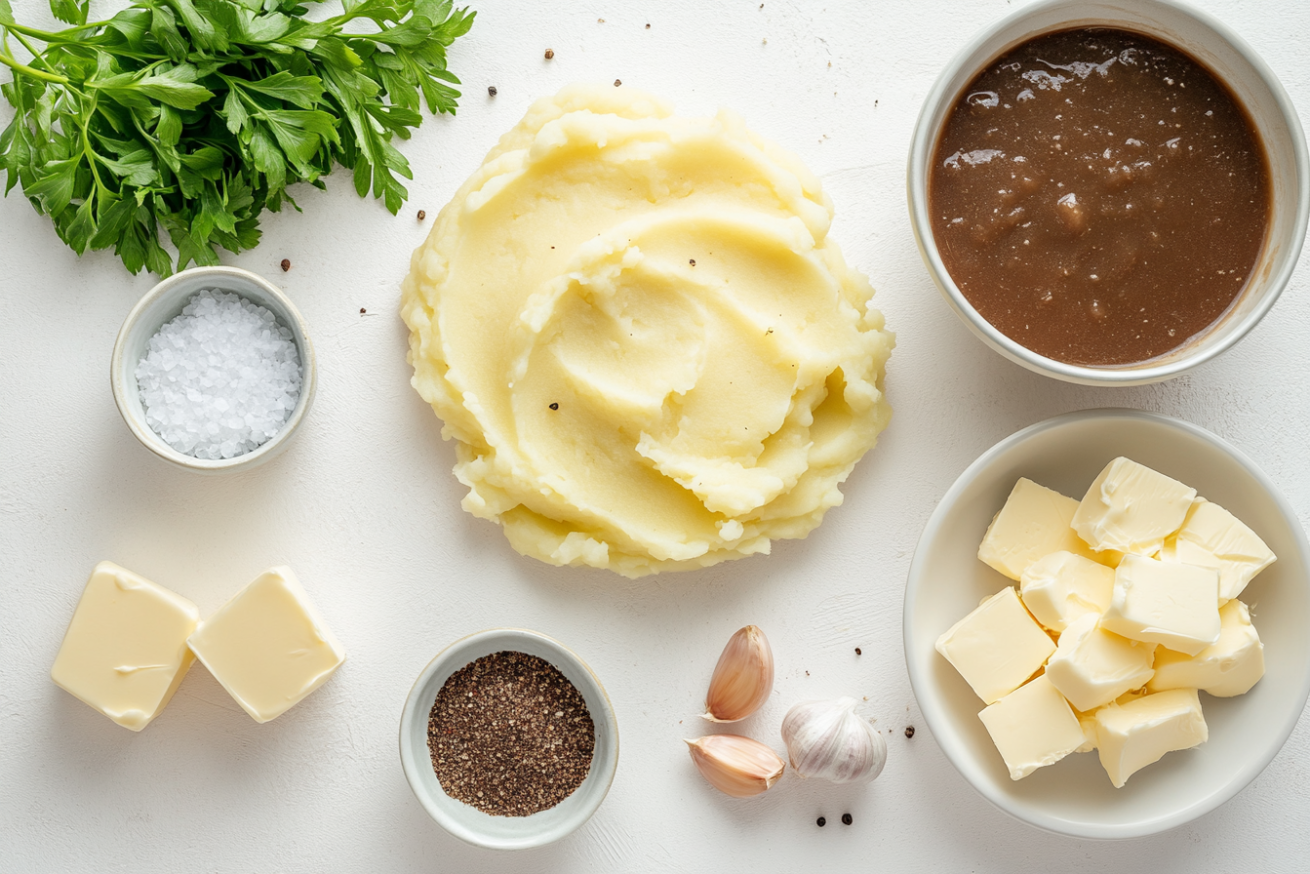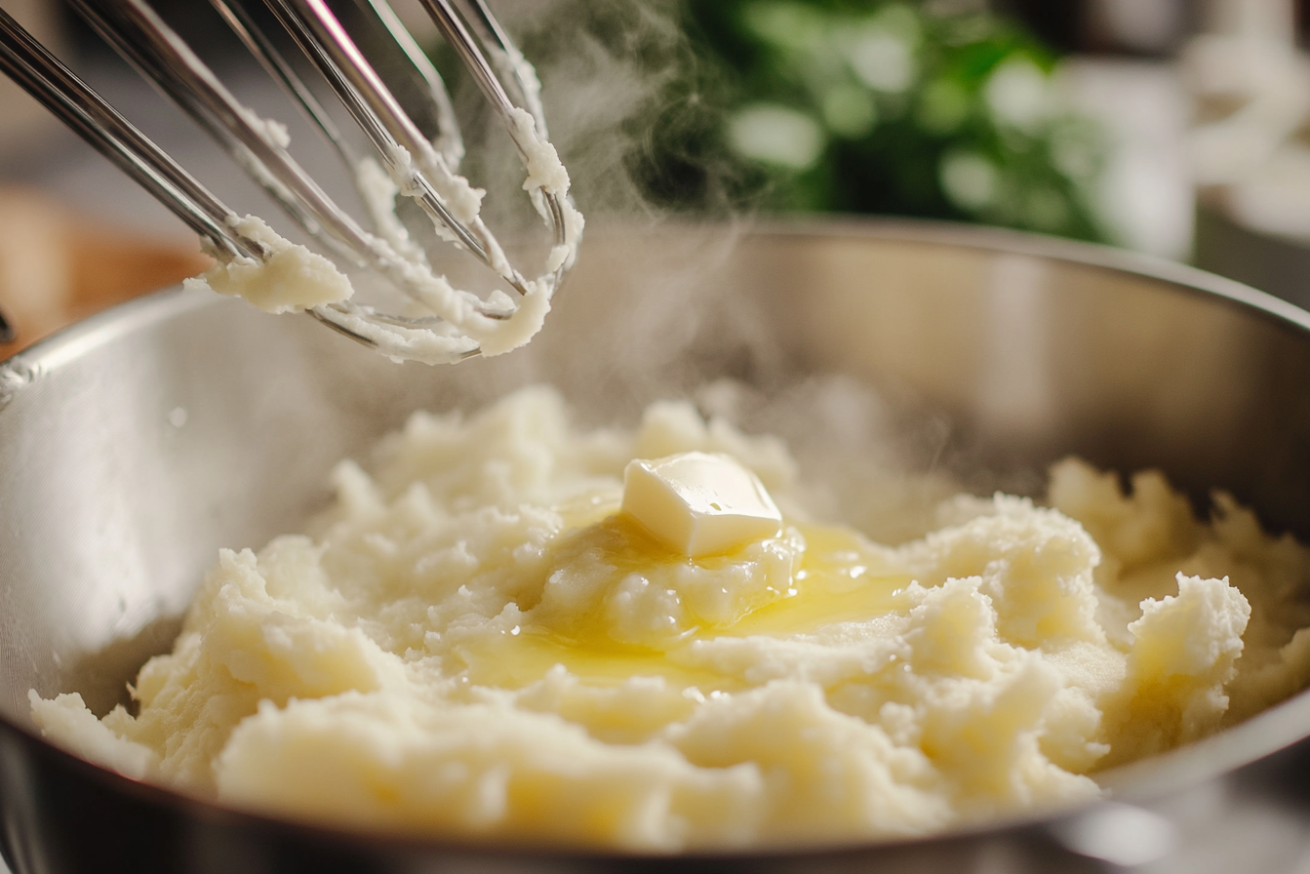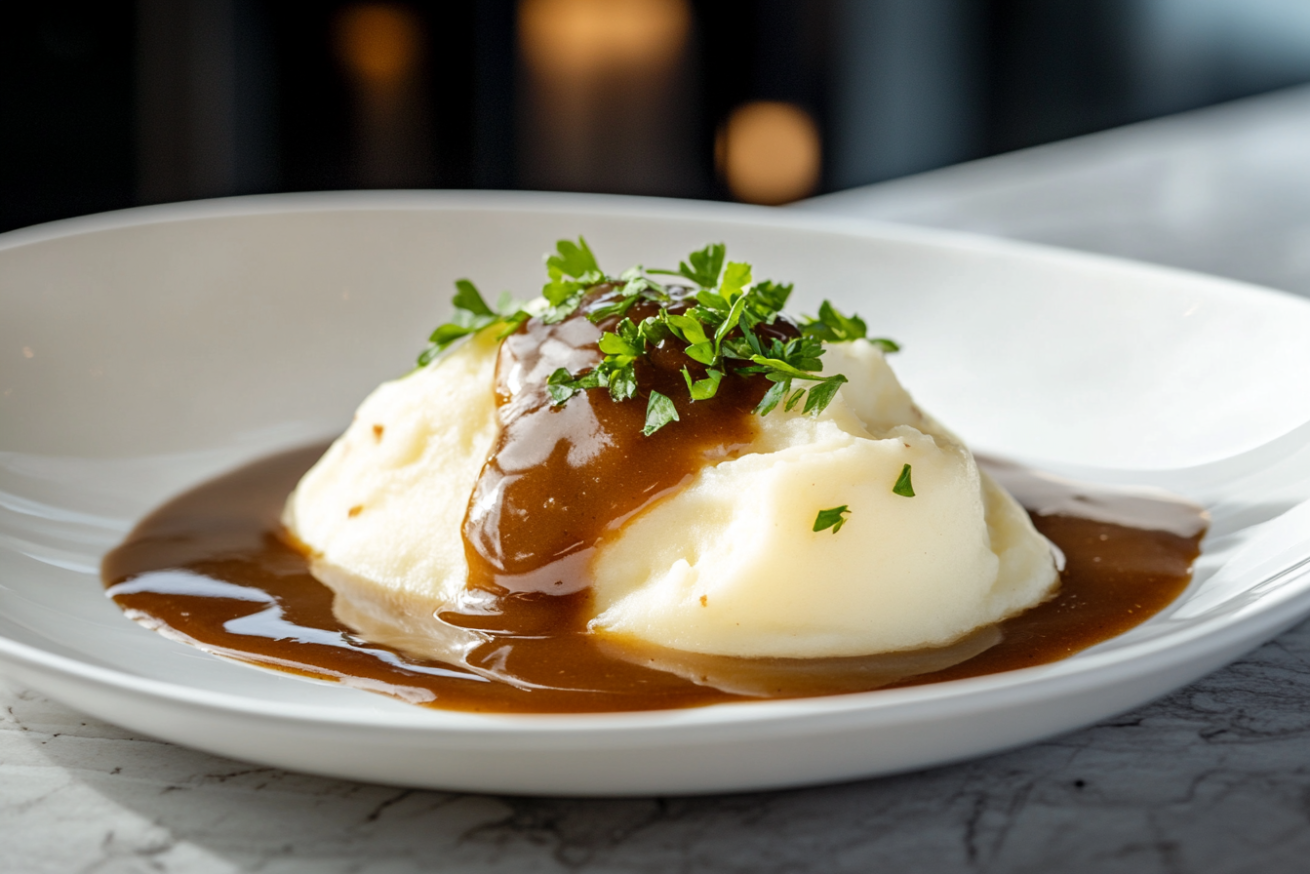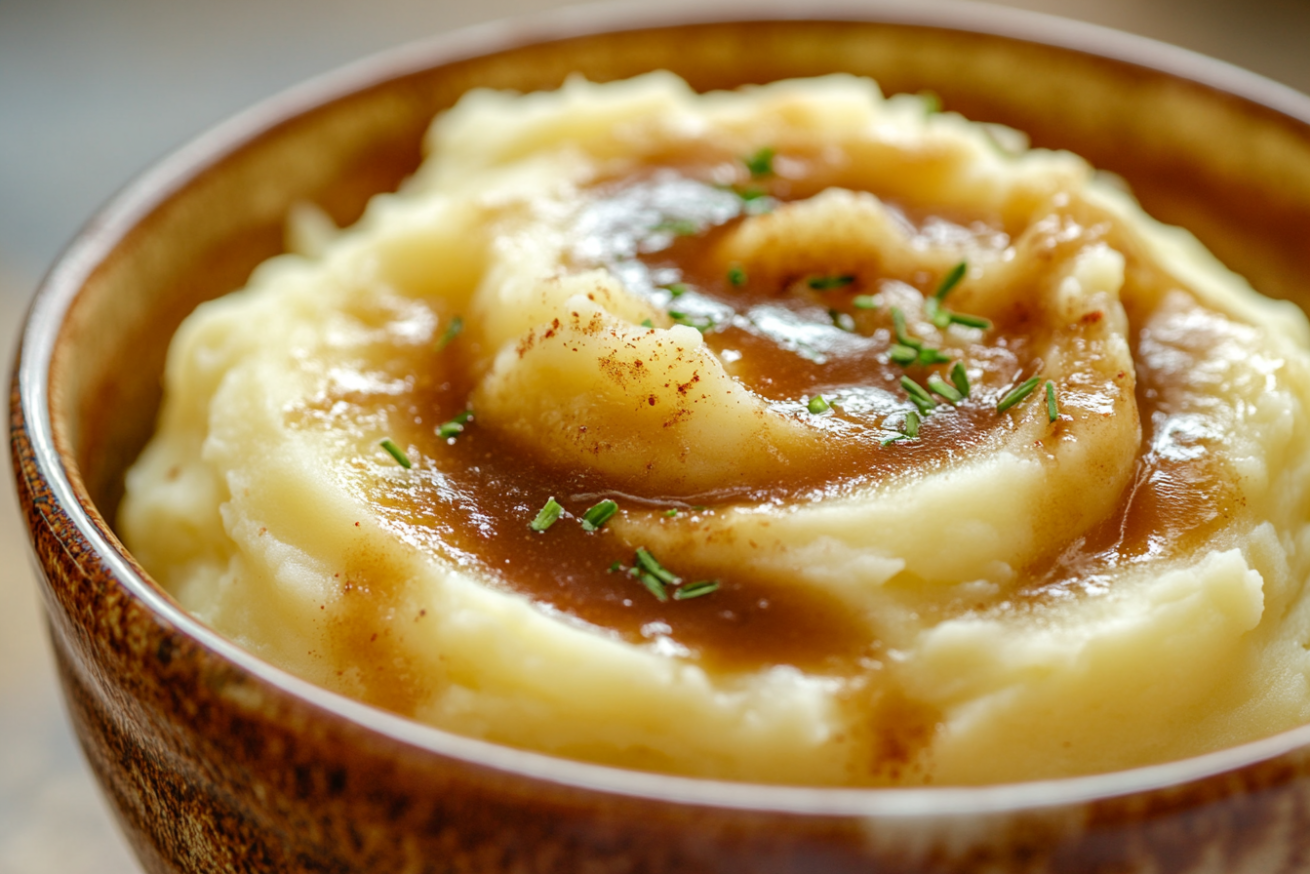Few dishes epitomize the essence of American comfort food quite like a hearty plate of homemade mashed potatoes and rich, savory gravy. This timeless combination has been a beloved staple on family dinner tables for generations, offering a sense of nostalgia and warmth with every bite. In this comprehensive guide, we’ll explore the history, cultural significance, and the art of crafting the perfect mashed potatoes and gravy from scratch.
Mashed potatoes and gravy hold a special place in the hearts and stomachs of countless Americans, conjuring memories of cherished family gatherings, cozy winter evenings, and the comforting flavors of home. Whether you’re seeking to recreate a cherished family recipe or discover new ways to elevate this classic dish, this article will provide you with all the essential tips and techniques to master the art of homemade mashed potatoes and gravy.
Key Takeaways
- Mashed potatoes and gravy are a quintessential American comfort food staple
- Homemade version offers a level of flavor and texture unmatched by store-bought options
- Selecting the right potato varieties and mastering gravy preparation are key to success
- Careful attention to detail and a few secret tips can yield creamy, lump-free mashed potatoes and silky, flavorful gravy
- Mashed potatoes and gravy can be easily customized and paired with a variety of main dishes for a satisfying family meal
The Ultimate Guide to Mashed Potatoes and Gravy
Mashed potatoes and gravy, a beloved American comfort food, have a rich history that extends beyond its status as a culinary staple. This classic dish has become ingrained in the fabric of American cuisine, transcending regional boundaries and serving as a unifying element in the diverse tapestry of the nation’s culinary heritage.
History of This Classic Comfort Dish
The origins of mashed potatoes and gravy can be traced back to the early colonial era, when settlers from Europe brought their traditional potato dishes to the New World. As potatoes became more widely available and agriculture flourished, the dish evolved, incorporating regional ingredients and cooking techniques. Over time, mashed potatoes and gravy became a beloved comfort food, nourishing generations of Americans and serving as a symbol of home and family.
Cultural Significance in American Cuisine
In the tapestry of American cuisine, mashed potatoes and gravy hold a special place. This iconic dish transcends class and regional boundaries, uniting people from all walks of life. From family gatherings to community events, the aroma of freshly made mashed potatoes and savory gravy evokes a sense of nostalgia and belonging, making it a cherished part of the American culinary landscape.
“Mashed potatoes and gravy are like a warm hug from your grandmother – comforting, familiar, and always satisfying.”
As the nation’s culinary landscape continues to evolve, the enduring popularity of mashed potatoes and gravy stands as a testament to the enduring power of comfort food and the deep cultural connections it fosters within American society.
Essential Ingredients for Perfect Mashed potatoes and gravy

Crafting the perfect batch of mashed potatoes requires a harmonious blend of carefully selected ingredients. From the choice of potato varieties to the right amount of butter, milk, and seasonings, each component plays a vital role in achieving that coveted creamy texture and rich flavor.
The foundation of exceptional mashed potatoes lies in the selection of the right potato varieties. Starchy potatoes, such as Russet or Yukon Gold, are the preferred choices, as they break down easily and absorb liquids seamlessly, resulting in a light and fluffy mash. Waxy potatoes, on the other hand, may result in a denser, more solid texture, better suited for dishes like potato salad.
The Art of Perfect Mashed Potatoes: Balancing Dairy and Seasonings
Once the potatoes are cooked to perfection, the addition of butter and milk is crucial. The perfect ratio of these dairy products can elevate the mashed potatoes to new heights, creating a silky smooth consistency and a decadent mouthfeel. The amount of butter and milk can be adjusted based on personal preference, with some preferring a richer, creamier version, while others may opt for a lighter, more subtle dairy profile.
Lastly, the incorporation of seasonings can truly elevate the mashed potatoes, transforming them from a simple side dish to a culinary masterpiece. A touch of salt, freshly ground black pepper, and aromatic herbs like garlic, chives, or rosemary can all contribute to the overall flavor profile, allowing you to tailor the dish to your personal tastes.
| Ingredient | Role | Recommended Amounts |
|---|---|---|
| Potatoes | Provide the base and texture | 2-3 lbs for 4-6 servings |
| Butter | Adds richness and creaminess | 4-6 tbsp for 2-3 lbs of potatoes |
| Milk | Enhances the creamy consistency | 1/2 – 1 cup for 2-3 lbs of potatoes |
| Seasonings | Elevates the overall flavor | Salt, pepper, garlic, herbs to taste |
By carefully selecting and combining these essential ingredients, you can unlock the true potential of mashed potatoes, creating a comforting and delightful dish that will satisfy even the most discerning palates.
Selecting the Right Potato Varieties for Mashing
When it comes to crafting the perfect mashed potatoes, the choice of potato variety is crucial. Potatoes can be broadly categorized into two main types: starchy and waxy. Understanding the distinct characteristics of these potato varieties can help you select the best ones for your mashed potato recipe.
Starchy vs. Waxy Potatoes
Starchy potatoes, such as Russet or Yukon Gold, are the go-to choice for light and fluffy mashed potatoes. These varieties have a high starch content, which helps them break down and absorb moisture, resulting in a creamy and airy texture. In contrast, waxy potatoes, like Red Bliss or New Potatoes, have a lower starch content and tend to hold their shape better, making them better suited for roasting or boiling.
Best Seasonal Choices for Mashed potatoes and gravy
- Spring: New Potatoes – their delicate skins and moist, dense flesh make them ideal for mashing.
- Summer: Yukon Gold – with their medium starch content, they strike the perfect balance between creaminess and structure.
- Fall: Russet Potatoes – the classic choice for light and fluffy mashed potatoes.
- Winter: Sweet Potatoes – a delicious alternative that adds a natural sweetness to the dish.
Storage Tips for Fresh Potatoes
To maintain the freshness and quality of your potatoes, it’s important to store them properly. Keep them in a cool, dark place, such as a pantry or cellar, away from direct sunlight. Avoid storing potatoes in the refrigerator, as the cold temperature can cause the starch to turn to sugar, altering the flavor and texture. With proper storage, you can ensure your potatoes are always ready for mashing when the craving strikes.
Step-by-Step Preparation Methods for Mashed potatoes and gravy

Crafting the perfect mashed potatoes is an art form that can elevate any meal to new heights. Whether you prefer them creamy and smooth or with a bit of rustic texture, the process of how to make mashed potatoes is surprisingly simple. Let’s dive into the step-by-step preparation methods to help you master this comfort food classic.
Washing and Peeling the Potatoes
Begin by giving your potatoes a thorough wash under running water. Gently scrub the skins to remove any dirt or debris. For a creamier texture, peel the potatoes using a sharp knife or vegetable peeler, ensuring you remove all the skin.
Cutting and Boiling the Potatoes
Once peeled, cut the potatoes into evenly sized chunks, approximately 1-inch pieces. This will ensure they cook at the same rate. Place the potato pieces in a large pot and cover them with cold water. Bring the water to a boil over high heat, then reduce the heat to medium-low and simmer until the potatoes are fork-tender, about 15-20 minutes.
Mashing Techniques
- Using a Potato Masher: Once the potatoes are cooked, drain them and return them to the pot. Use a sturdy potato masher to gently press and mash the potatoes until they reach your desired consistency.
- With a Hand Mixer: For an extra creamy texture, use a hand mixer to whip the potatoes after draining. Start on a low speed and gradually increase the intensity as the potatoes become smoother.
- In a Food Processor: For the silkiest mashed potatoes, transfer the cooked potatoes to a food processor and pulse until they reach the perfect creamy texture.
Regardless of the mashing technique you choose, be sure not to overmix the potatoes, as this can result in a gummy, dense texture.
Remember, the key to cooking methods for mashed potatoes is to find the balance between the desired texture and the time and effort you’re willing to invest. With a little practice, you’ll be whipping up restaurant-quality mashed potatoes in no time.
Creating Silky Smooth Gravy from Scratch
Mastering the art of homemade gravy is a game-changer in the world of comfort food. Whether you’re serving up classic mashed potatoes or versatile roasted veggies, a well-crafted gravy can elevate any dish to new heights. In this comprehensive guide, we’ll explore the secrets to creating silky smooth homemade gravy that will have your guests raving.
Types of Gravy Bases
The foundation of a great gravy starts with the right base. From savory meat drippings to flavorful vegetable stocks, there are several options to choose from:
- Meat Drippings: Capturing the rich essence of roasted meats, such as chicken, turkey, or beef, creates a robust and deeply flavored gravy base.
- Vegetable Stock: For a meatless alternative, a well-seasoned vegetable stock can provide a delicious and versatile gravy foundation.
- Roux: A classic French technique, a roux made with flour and fat (butter or oil) can thicken and add body to your gravy bases.
Troubleshooting Common Gravy Issues
Achieving the perfect gravy consistency can be a culinary challenge, but with a few simple tips, you can master it in no time. If your gravy is too thin, try adding a bit more roux or simmering it a little longer to allow the starch to thicken. On the other hand, if your gravy is too thick, simply whisk in a splash of stock or milk to thin it out.
Remember, the key to flawless gravy is patience and constant attention. Stir frequently, taste as you go, and don’t be afraid to make adjustments until you reach the desired texture and flavor profile.
Secret Tips for Creamy Mashed Potatoes
Achieving the perfect, creamy texture in homemade mashed potatoes is an art form that requires precision and a bit of insider knowledge. Whether you’re whipping up a batch for a cozy family dinner or a large holiday gathering, these secret tips will help you master the art of creamy mashed potatoes.
One of the keys to creamy mashed potatoes lies in the choice of potato variety. Opt for starchier potatoes, such as Yukon Gold or Russet, which have a higher starch content that helps create a smooth, velvety consistency when mashed. Avoid waxy potatoes, like red or new potatoes, as they tend to result in a more chunky, grainy texture.
Another crucial step is to cook the potatoes properly. Ensure that you cut them into evenly sized pieces and boil them until they are fork-tender, but not overcooked. Overcooking can lead to a gummy, gluey texture that you’ll want to avoid. Drain the potatoes well and let them steam for a few minutes before mashing to remove excess moisture.
- Use a ricer or a masher to gently mash the potatoes, rather than a mixer or blender. This helps maintain the potato texture and prevents the starch from becoming overworked, which can result in a gluey consistency.
- Gradually add warm milk or cream, incorporating it slowly to allow the potatoes to absorb the liquid and achieve that luscious, creamy finish.
- Don’t be afraid to experiment with different mashing techniques, such as folding in a bit of butter or sour cream, or even a splash of chicken or vegetable broth to add depth of flavor.
By following these secret tips, you’ll be well on your way to creating the most creamy mashed potatoes that will have your family and guests asking for seconds.
“The secret to the creamiest mashed potatoes is all in the technique. Gently mashing, not overmixing, and adding warm liquid in small increments is the key to achieving that cloud-like texture.”
Common Mistakes to Avoid When Making Gravy
Crafting the perfect gravy can be a delicate art, but with the right knowledge, you can easily sidestep common pitfalls. One of the most frustrating issues is a gravy with an undesirable lumpy texture. This can be caused by not properly whisking the flour into the fat, leading to unincorporated pockets. To achieve a smooth, silky consistency, be sure to thoroughly blend the roux before gradually adding the liquid.
Another common mistake is over-seasoning the gravy, resulting in a flavor that is overpowering and unbalanced. When it comes to seasoning, it’s important to taste and adjust as you go. Avoid simply adding a predetermined amount of salt and pepper. Start with a small amount, then gradually build up the flavors. This approach ensures a balanced blend that complements the other components of the dish.
Consistency Problems
- Lumpy gravy can be caused by not properly whisking the flour into the fat
- Ensure the roux is thoroughly blended before gradually adding the liquid
- Whisk vigorously to incorporate all the ingredients and prevent clumping
Seasoning Balance
- Taste the gravy as you go and adjust the seasoning gradually
- Start with a conservative amount of salt and pepper, then build up the flavors
- Avoid over-seasoning, which can lead to an overpowering and unbalanced flavor
By avoiding these common gravy mistakes, such as lumpy gravy and over-seasoned gravy, you’ll be well on your way to creating a silky, flavorful accompaniment that will elevate your mashed potatoes to new heights.
Variations and Flavor Enhancements
Beyond the classic mashed potatoes and gravy, there’s a world of creative variations to explore. Herb-infused potatoes can elevate the dish with the aromatic flavors of rosemary, thyme, or garlic. For a richer, more indulgent take, try garlic mashed potatoes, where roasted garlic is mashed right into the spuds.
For those looking to add some extra flair to their gravy, the options are endless. Flavored gravies can range from the savory, like mushroom or onion, to the more adventurous, such as red wine or even blue cheese-infused versions. The possibilities are limited only by your imagination.
- Herb-Infused Mashed Potatoes: Stir in fresh chopped herbs like rosemary, thyme, or chives for a fragrant twist on the classic.
- Garlic Mashed Potatoes: Roast garlic cloves and mash them right into the potatoes for a rich, creamy, and flavorful dish.
- Flavored Gravies: Experiment with unique gravy bases, such as mushroom, caramelized onion, or even red wine for a more sophisticated touch.
So, don’t be afraid to get creative with your mashed potato and gravy dishes. By exploring these variations and flavor enhancements, you can transform a comforting classic into a truly memorable meal.
“Mashed potatoes are a blank canvas, waiting to be elevated with your personal touch.”
Perfect Pairings and Serving Suggestions
When it comes to eat mashed potatoes with gravy, the possibilities for delicious pairings are endless. While traditional meat-based combinations are always a crowd-pleaser, there are also plenty of satisfying vegetarian options to explore.
Traditional Meat Combinations
For the ultimate comfort food experience, eat mashed potatoes with gravy alongside classic proteins like roasted chicken, savory pot roast, or juicy pork chops. The rich, velvety gravy complements the hearty flavors of these main courses perfectly.
Vegetarian Options for Mashed Potatoes and Gravy
Don’t be afraid to get creative with your side dishes when serving mashed potatoes with gravy. Pair it with roasted vegetables, grilled portobello mushrooms, or a warm lentil stew for a satisfying meat-free meal. The creamy texture and savory notes of the gravy will bring these main course pairings to life.
| Meat-Based Pairings | Vegetarian Pairings |
|---|---|
| Roasted Chicken | Roasted Vegetables |
| Pot Roast | Grilled Portobello Mushrooms |
| Pork Chops | Lentil Stew |
Regardless of your preferred protein, mashed potatoes with gravy are the ultimate side dishes that pair beautifully with a variety of main course pairings. Experiment with different flavor combinations and presentation styles to find your personal comfort food favorites.
Make-Ahead and Storage Guidelines
Preparing make-ahead mashed potatoes and gravy can be a game-changer when it comes to hosting a stress-free gathering. By planning ahead, you can enjoy the convenience of having these comforting dishes ready to go without the last-minute hustle.
To make mashed potatoes in advance, prepare the recipe as usual but don’t serve them right away. Let the potatoes cool completely, then transfer them to an airtight container. Store in the refrigerator for up to 5 days. When ready to serve, reheat the potatoes on the stovetop or in the microwave. Add a splash of milk or cream while reheating to bring back their creamy texture.
As for storing leftover gravy, it can be stored in the refrigerator for up to 4 days. When reheating, be sure to do so slowly on the stovetop, stirring frequently to prevent the gravy from separating or becoming too thick. You can also freeze leftover gravy in an airtight container for up to 3 months. Reheating tips include thawing the gravy in the refrigerator overnight and then gently reheating it on the stovetop.
| Item | Refrigerator | Freezer |
|---|---|---|
| Mashed Potatoes | Up to 5 days | Up to 3 months |
| Gravy | Up to 4 days | Up to 3 months |
By following these simple make-ahead and storage guidelines, you can enjoy the comforting flavors of homemade mashed potatoes and gravy with minimal last-minute preparation. Savor the convenience of having these classic comfort food staples ready to go when you need them most.
Conclusion
Homemade mashed potatoes and gravy are the quintessential comfort food, bringing warmth and satisfaction to any meal. From its rich history to its cultural significance in American cuisine, this simple dish brings families and friends together for a memorable dining experience.
In this guide, we’ve explored the essential ingredients, preparation techniques, and expert tips to help you master perfectly creamy mashed potatoes and silky-smooth gravy. Whether you prefer the traditional recipe or enjoy experimenting with creative variations, the key lies in finding a combination that suits your personal taste.
As you continue your culinary journey, put these lessons into practice and elevate your mashed potatoes and gravy to new heights. Enjoy the process, treasure the memories, and share this comfort food classic with your loved ones for a truly satisfying family dinner.
FAQ
What is mashed potatoes and gravy made of?
Mashed potato gravy typically includes a few key ingredients: meat drippings or broth, flour, milk or cream, and seasonings. These seasonings often include salt, pepper, and herbs. To make the gravy, start by creating a roux using fat and flour. Next, whisk in the liquid to form a rich and flavorful sauce. This savory gravy is then poured over the mashed potatoes.
Do you eat mashed potatoes and gravy?
Yes, mashed potatoes and gravy are a classic comfort food combination. The creamy, buttery mashed potatoes pair perfectly with the savory, flavorful gravy, creating a satisfying and comforting meal.
What sauce goes well with mashed potatoes and gravy?
While gravy is the traditional and most popular sauce for mashed potatoes, there are many other tasty options. Some sauces that pair well include mushroom sauce, cheese sauce, and white pepper sauce. Even simple butter or olive oil can complement the dish beautifully.
What is KFC mashed potatoes and gravy made of?
KFC’s potato and gravy is made from a proprietary blend of ingredients. The mashed potatoes are likely made from real potatoes. The gravy, on the other hand, is typically chicken-based and made from seasoned drippings and broth. Although the exact recipe remains a secret, the combination of creamy mashed potatoes and savory gravy is a beloved KFC classic.


